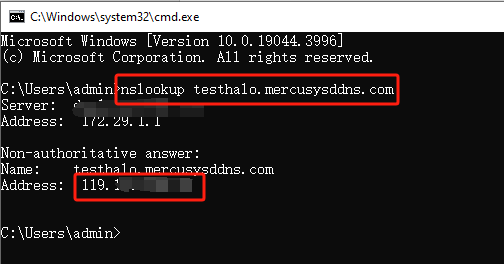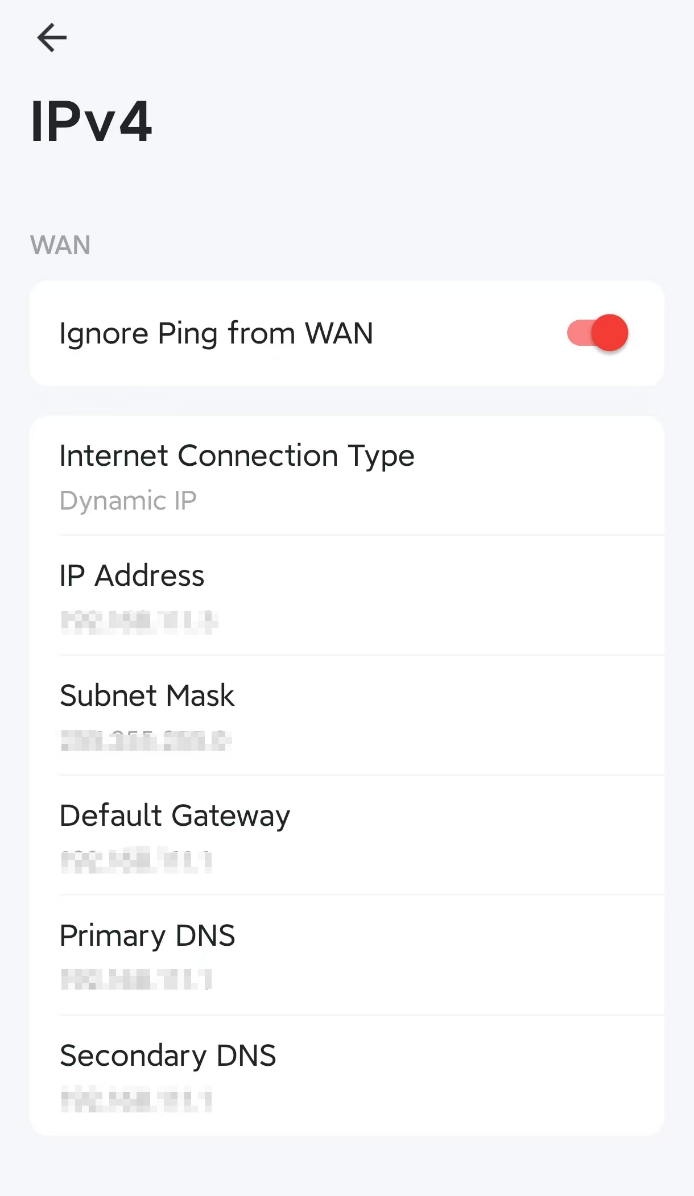Troubleshooting Guide of DDNS function on MERCUSYS Router or Halo
DDNS, most commonly known as Dynamic DNS, is an automatic method of refreshing a name server. It can dynamically update DNS records without the need for human interaction. It is extremely useful for updating IP address records when the public IP address changes.
If you have any problem using the DDNS function on MERCUSYS Wi-Fi Router, 5G/4G Router or Halo Router(we will just call it Router in this article), before troubleshooting, please refer to the following tips to confirm if it is really DDNS issue.
Tip 1. Will the DDNS domain name always be bound to my Router WAN IP address?
The DDNS domain name is bound to the real public IP address, if your router's WAN IP address is a private address or CGNAT address, the IP address bound to the DDNS will be different from your router's WAN IP address.
In that case, the remote access to the router or local server will not work even after you configure port forwarding on the Router, because it means there is another one or more NATs in the front of your router, you will need to open related ports on the front NAT products as well.
Note: For 5G/4G Routers working on 5G/4G Router mode, it uses SIM card to get internet access, if the WAN IP is not public IP address, it means the front NAT is on your ISP side, so you are unable to open related ports on front NAT product, please contact your ISP to see if they could assign you a public IP address directly.
Tip 2. Methods to tell whether it is a public IP address or not
1) Private IPv4 addresses have the following class configurations:
Class A IP addresses: from 10.0.0.0 to 10.255.255.255
Class B IP addresses: from 172.16.0.0 to 172.31.255.255
Class C IP addresses: from 192.168.0.0 to 192.168.255.255
Carrier Grade NAT (CGNAT) addresses: from 100.64.0.0 to 100.127.255.255
2) Or you could also google your public IP address on a client device connected to the Router, then compare it with the Router WAN IP address. If they are the same, it means the Router WAN IP is a real public IP address, if not, it means it is private IP address or the CGNAT address.
Tip 3. How to tell whether my DDNS is working or not
Via nslookup command
For example, if your DDNS domain name is xxxxx.mercusysddns.com, then you could input “nslookup xxxxx.mercusysddns.com”, and then press Enter to check if the correct IP address can be resolved, if so, it means the DDNS is working now.

Note: The correct IP address is your public IP address, it might be different from your Router WAN IP address, which depends on whether your Router WAN IP is a public IP or not.
Troubleshooting steps if you are unable to access the local server remotely via the DDNS domain name
Step 1. Check if your Router WAN IP address is public IP address or not.
For example, you could check Halo WAN IP address via MERCUSYS App: More->Advanced->IPv4

Step 2. Check if the port forwarding rules are configured correctly on the Router for a local server.
Note: If you are trying to access the router web interface remotely instead of local servers, you should check if remote web management is configured correctly on the Router.
Step 3. Check if the DDNS is bound to the correct IP address via nslookup command mentioned in Tip 3 above.
Step 4. Check if you could access the local server via the current public IP address instead of the DDNS, which could confirm whether port forwarding really works or not.
If it cannot be accessed remotely via a public IP address either, please troubleshoot the port forwarding feature first: Why port forwarding feature is not working on my router?
Step 5. Contact MERCUSYS Technical Support and provide us with the following details:
1) Detailed network topology and whether your MERCUSYS Router WAN IP is a public IP address
2) Screenshots of port forwarding rules and the DDNS settings page.
3) Are you able to access the local servers remotely via a public IP address?